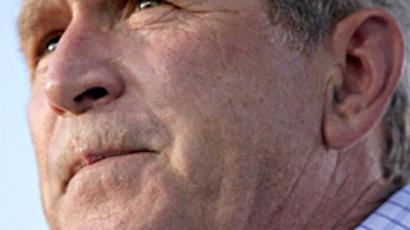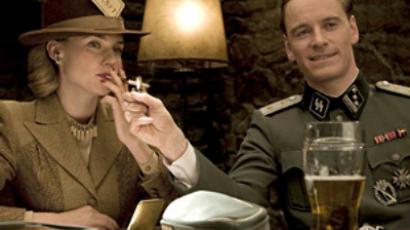American activist killed in Israel remembered in documentary
Seven years ago the American peace activist Rachel Corrie was crushed to death by an Israeli bulldozer as she campaigned against the demolition of Palestinian homes in Gaza.
The 23-year-old American activist was participating in a non-violent protest when a 49-ton Israeli army bulldozer ran her over.
The unprecedented killing sparked outrage worldwide, and put the issue of security of international activists firmly in the spotlight.
On the anniversary of her killing, a trial brought by her parents against the Israeli government got underway.
RT spoke with filmmaker Simone Bitton, who has made a documentary investigating the circumstances around Rachel's death.
RT: Why did you choose Rachel as the subject of your documentary? What drew you to her story?
Simone Bitton: I'm making films in Israel and Palestine. It is not my first film there. Usually I’m motivated to make a film when the red line is crossed. Rachel's killing was that red line because it was for the first time when a young foreigner who came in a solidarity mission with the Palestinian civilians was killed by the Israeli army. It never happened before. There were other cases after her, but that was the first time. It really was a red line.
In the Middle East we always think it can’t be worse, but always something happens to show it can be worse. And this was one of these moments, because if even a non-violent young protestor –and she was an American citizen – can be killed by the Israeli army, it means that Palestinian civilians remain without protection at all, even though it was very small protection.
RT: You show some very graphic images in your documentary. You didn't seem to censor anything. Why don't you think it was important to show?
SB: The thing is the inquiry into the death of this young person; it would have made no sense not to show what I'm talking about. So, I gathered so many documents, videos, photographs, the positions – there are many documents in the film, including images of Rachel’s body just after she was killed. All my work won't make sense if I kept my eyes away from images, because this is what I talk about in the film.
In the film I share with the viewer some of my feelings about these kinds of images because the images of the direct aftermath of the killing are shown by the young activist who actually took the pictures. And he talks himself about how you feel when you take such pictures. You feel like a voyeur, it is obscene, but still you feel you must do it because you know the proof will be needed.
RT: Your film was called a masterpiece documentary, and it was even accepted by the Jewish festival and caused a lot of controversy and opened a lot of protests and heavy criticism. You are an Israeli citizen, are you surprised by all this?
SB: The film was shown in very prestigious international festivals, in the Tribeca Festival in New York and the Berlin Biennale. It arrived to the San Francisco Jewish Film Festival already with the legitimacy of the cinema world and, yes, at this festival everyone was very surprised, but there was a very harsh and brutal response from some Jewish institutions in San Francisco that gave us a lot of publicity. I always say as an Israeli citizen, who is clearly a dissident to the Israeli occupation of the Palestinian territories, I know that many people do not like what I am doing. But I am okay with this. I do not have any problems at all. It’s surprising that people behaved so vulgar in San Francisco and attacked the film before seeing it. It was ridiculous.
RT: Do you view Rachel as a martyr?
SB: No, I never use this name. I think a martyr would be somebody who is ready to die. I am sure that Rachel didn’t want to die. She came there for life, for playing with children, testifying and protecting. She did not take at all into consideration that she could be killed because nobody was killed before her. It never happened that the Israelis went so far as to kill a foreign protester. So, she is not a martyr, she is a victim.
RT: Do you think that the driver of the bulldozer intentionally killed her?
SB: I can’t prove that. What I can prove, and this is very well explained in the film, is that the bulldozer drivers saw Rachel and her friends for three hours. It was a very long demonstration, and a kind of a game, a terrible game between the bulldozers and the protesters.
There was interaction between them, as the official Israeli version says; it was an accident because the bulldozer driver could not see her. It does not make sense, I cannot say if at the very last moment while he was driving over her, he saw her. He is the only one to know. What I know is that there were three hours that he saw her, they saw each other and were interacting with each other. If he did not see her at the last moment, maybe that’s because he did not want to see.
RT: In all the work that you are putting in this film together between the interviews and the footage. What did you find to be the most difficult in telling Rachel’s story?
SB: I think that it was a very difficult movie to make.
RT: What was the most difficult?
SB: It was the most difficult of all the films, and I made a lot of films in Palestine. I discovered when I was doing it that it was a very sensitive issue. Really nobody wanted to talk about it at the beginning. It was getting more and more difficult for us to work there, because it was more and more difficult to move from place to place. Even for me, an Israeli citizen, as I am privileged, I’m part of the tribe and it helps. But still it was difficult. There are scenes in the film that were shot without my presence because the army did not let me enter Gaza for the last week of shooting.
That’s the only time it happened to me over 30 years of my professional life. I had to direct sequences from far, did interviews by phone, because the army would not let me into Gaza. But when the door is closed, we have to go through the windows. We have to go where they do not want us to go.
RT: Why did you decide to attend the trial?
SB: I wanted to attend the trial because I was living with this story for more than three years and it is an important moment and I want to be there. And I wanted to be with Rachel’s family. For me it’s a normal gesture of solidarity with the characters of my film. But also it was important for me to show the film in Israel at the time of the trial. The film will be broadcast on Israeli satellite. Also, I’m going to hold special screenings in the cinemas, because in my film there are many elements and testimonies that will not be heard at the trial. Because the court does not bring in the Palestinian witnesses and does not go to the Gaza Strip to see where it happened. And many direct, key witnesses of Rachel’s killing will not be there. But they are all in my film.
I wish the judge has the opportunity to see my film. He will learn a lot.
Read also – Israel Gives The Finger To The USA














